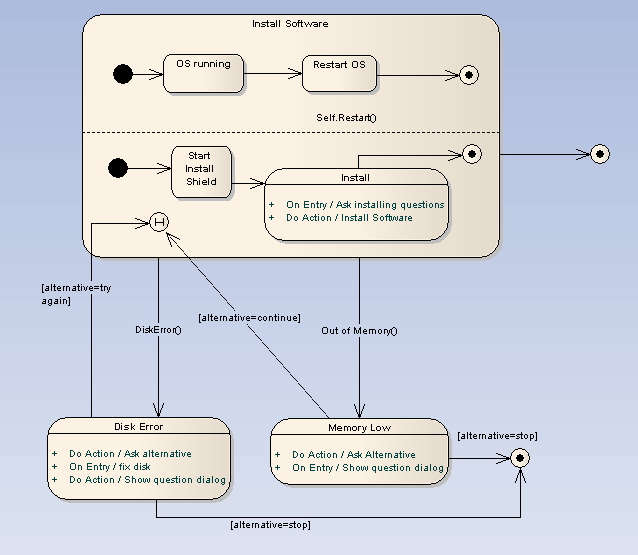Composite States are semantically equivalent to Submachine States, but they cannot be reused as Submachine States can. They are composed within the State Machine diagram by expanding a State element, adding Regions if applicable, and dragging further State elements, related elements and connectors within its boundaries. The internal State elements are then referred to as Sub-states. (A Submachine State links to a separate child State Machine diagram composed outside the parent diagram.)
Composite States can be orthogonal, if Regions are created. If a Composite State is orthogonal, its entry denotes that a single Sub-state is concurrently active in all Regions. The hierarchical nesting of Composite States, coupled with Region use, generates a situation of multiple States concurrently active; this situation is referred to as the active State configuration.

OMG UML Specification
The OMG UML specification (UML Superstructure Specification, v2.0, p. 478) states:
"A composite state either contains one region or is decomposed into two or more orthogonal regions. Each region has a set of mutually exclusive disjoint subvertices and a set of transitions. A given state may only be decomposed in one of these two ways.
"Any state enclosed within a region of a composite state is called a substate of that composite state. It is called a direct substate when it is not contained by any other state; otherwise it is referred to as a indirect substate.
"Each region of a composite state may have an initial pseudostate and a final state. A transition to the enclosing state represents a transition to the initial pseudostate in each region. A newly-created object takes its topmost default transitions, originating from the topmost initial pseudostates of each region.
"A transition to a final state represents the completion of activity in the enclosing region. Completion of activity in all orthogonal regions represents completion of activity by the enclosing state and triggers a completion event on the enclosing state. Completion of the topmost regions of an object corresponds to its termination."


